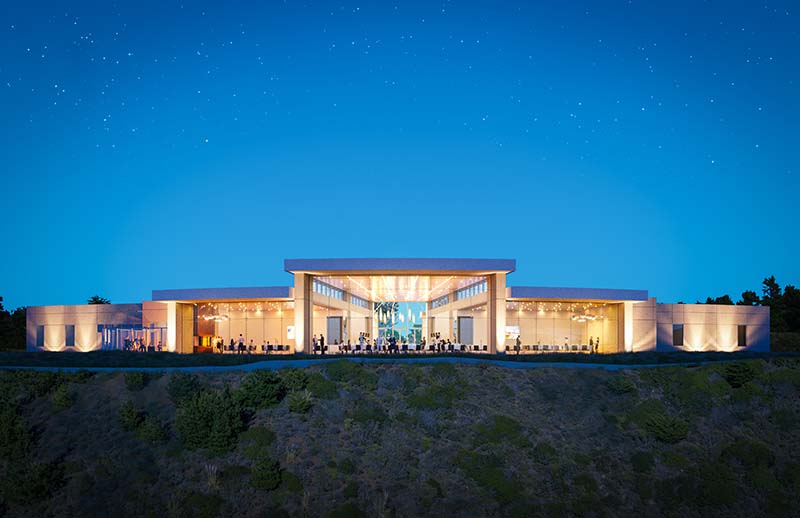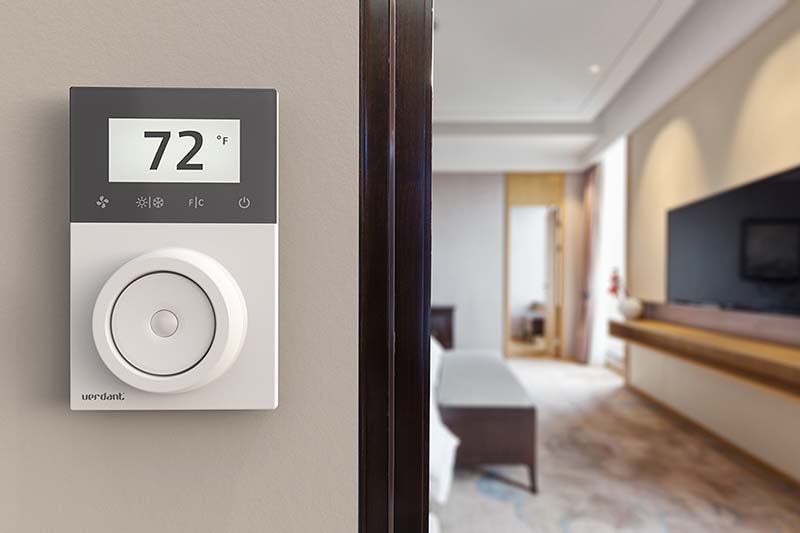Comfortably conditioned structures may be the common goal for all HVAC contractors, but how each industry sector achieves the goal is different. Take ceiling fans, for example. Although often placed in the home by a customer, residential contractors do not typically specify it, nor do they regularly include them in their heating and cooling solutions. On the commercial side, however, in some instances ceiling fans are becoming a key component to keep the space comfortable while remaining energy efficient.
“On the sustainability edge of this, we are seeing the rise of radiant heating and cooling combined with ceiling fans for circulation,” said Bob Dills, vice president of Western Allied Mechanical, Menlo Park, California. “This allows for a reduction in the amount of required supply air, which can be adjusted to only meet the outdoor air needs of the building, with smaller ductwork and fans adding to the economics and reducing noise.”
The member of the Mechanical Service Contractors of America (MSCA) Board of Managers explained that keeping energy consumption and costs down is now being challenged by the requirement of increased outdoor air ventilation.
“In the next three to five years, I would expect gas fired heating to diminish as the decarbonization trend continues to gain strength,” said Dills. “Radiant floor and ceilings will grow, as will geothermal loops in markets where it has not traditionally enjoyed strength, particularly in the West.”
Decarbonization in its simplest form is the removal of carbon. This can be from a business process, a product, or the energy source itself. In a home, this could be a single change to solar or a geothermal system. In the commercial sector, however, decarbonization is moving into a complex combination of HVAC technology and controls integration.

ENERGY STILL MATTERS: Western Allied Mechanical completed two college campus buildings that are zero-net-ready: Canada College Math and Science in Redwood City, California, and the one pictured here, Skyline College Environmental Science in San Bruno, California.
“A major trend relating to decarbonizing commercial buildings is the demand for all electric heating and cooling, even within industry segments like laboratories, enabling the present or future use of solar-generated and other clean power,” said Dills. “And the design topics related to buildings has moved from net-zero energy to zero-net ready and out towards zero net carbon. At Western Allied Mechanical, we recently completed two college campus buildings that are zero-net-ready: Canada College Math and Science in Redwood City, California, and Skyline College Environmental Science in San Bruno, California.”
Internet of Things Disruption
The controls systems used to manage the technological advances in energy and air quality control center on the building management system and its enhancement via IoT. As IoT moves from novelty to increasing demand in the residential sector, contractors are still defining how far homeowners will want to take the trend. The commercial contractor, however, is facing what Matt Wall, senior product manager for Samsung HVAC, Roanoke, Texas, describes as a disruptor.
“The commercial HVAC industry in particular is benefiting from IoT disruption,” he said. “The days of having standalone HVAC units that can’t communicate with one another or a building management system (BMS) are fading into the past. Building owners and managers now expect IoT-connected systems that provide greater control over HVAC energy efficiency, maintenance needs, and lifecycle costs.”
Wall said that HVAC systems with IoT connectivity are capable of realizing a wide range of operational efficiencies that contribute to reduced energy consumption, improved efficiency, enabled predictive maintenance, easy remote access, and better occupant comfort.
“By setting rules in a building automation system, commercial facilities can also program IoT data to initiate a sequence of events,” he said. “For example, a building has a rental space that should be set at 75°F when unoccupied but lowered to 65° when occupied. This sequence can be automated through a standard BMS protocol, but what happens if an event is canceled last minute? With IoT connectivity, this new information can be automatically relayed between the room reservation program and individual thermostats. IoT prevents a facility manager from having to manually change the settings in the BMS interface or physically adjust individual thermostats.”
IoT trends are not just benefitting customers. It is expected that increased product insight from IoT will allow commercial contractors to adapt their businesses to increased operating efficiency as well as improved bottom lines.
“A high performance building with connected building systems allows the HVAC contractor to have more visibility into systems, thus enabling them to keep their client’s buildings maintained, anticipate issues, and expedite troubleshooting and problem resolution,” said Julie Wolfington, energy and sustainability leader of Boland in Gaithersburg, Maryland. “Technicians can come on-site for a service call more prepared to tackle the issue, possibly even arriving armed with necessary parts for repair.”
The member of the Maryland MSCA Education Committee explained that secure, remote connectivity is enabling more data from all types of networked building systems to be stored for trending and analysis.
“Shared sensors across integrated systems work to solve problems and satisfy new use cases for building owners,” said Wolfington. “We can finally put this data into the hands of experts who can turn it into actionable insights for clients.”
Along with contractors’ focus on IoT technology comes an increased emphasis on products to meet these demands.
“We're seeing a lot of requests for remote capabilities, which ultimately make cloud-based solutions a great fit for customers that are looking to be able to not only manage their facility from a different location, but also trend data for much longer,” said Melissa Cisewski, senior offering manager at Honeywell. “This data allows contractors to apply more complex and telling analytics to move closer and closer to predictive maintenance and, ultimately, safer spaces for the people living and working in them.”
Business Health
Commercial contractors have a faceted focus as they work to address the pressing matters of each customer. Sometimes a company focuses on saving energy; other times, the focus turns to saving money. Right now, a large share of the focus is trained on health in the workplace.
“Depending on the region, some contractors are busy working to update and implement healthy buildings solutions,” said Cisewski. “The new requirements are forcing them to further their knowledge of HVAC and its impact on building health and safety. This greater focus on healthier buildings is helping to make safer spaces.”
Addressing their own businesses, commercial contractors have a labor shortage to consider. Complex systems come into play as employment decisions are made. First, technicians have to be trained in security, IoT, and a plethora of other integrated system devices.

CONNECTED TECHNOLOGY: The Verdant ZX Series Energy Management Thermostat from Emerson uses passive infrared motion sensing technology to setback the temperature in empty rooms.
“Systems are designed with more onboard controls and IoT sensors to optimize efficiencies and comfort, depending on occupancy demands,” said Mark Bills, vice president and general manager for commercial air conditioning, Emerson. “As a result, it will be important for HVAC contractors to recruit and retain the best technician base possible with the appropriate education, skills, and knowledge around these new systems and solutions.”
He explained that the continued technician shortage would likely coincide with the switch to more connected and predictive IoT solutions.
“Predictive controls will allow contractors to preemptively repair systems before they reach critical failure modes,” said Bills. “Remote monitoring and system diagnostics will offer faster, more-accurate field service, which is increasingly more important in commercial buildings.”
Emerson offers free online training available to technicians, contractors, wholesalers, end users and original equipment manufacturers (OEMs) who want to stay up-to-speed on new HVACR technologies.



Report Abusive Comment